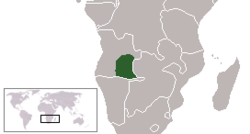Mbunda Kingdom | |||||||||
|---|---|---|---|---|---|---|---|---|---|
| c. 1500–1917 | |||||||||
| Status | Sovereign kingdom (1500–1917) | ||||||||
| Capital | Lumbala N'guimbo | ||||||||
| Common languages | Mbunda language Portuguese | ||||||||
| Ethnic groups | Mbunda people | ||||||||
| Religion | Christianity with some traditional practices | ||||||||
| Government | Absolute monarchy with autonomous regions | ||||||||
| King | |||||||||
• c. 1870–1914 | Mwene Mbandu Lyonthzi Kapova | ||||||||
• 1914–1917 | Mwene Mbandu II Kathzungo Shanda | ||||||||
| History | |||||||||
• Established | c. 1500 | ||||||||
• Mwene Mbandu Lyonthzi Kapova captured by the Portuguese | 1914 | ||||||||
| 1914 | |||||||||
• Annexed by the Portuguese | 1917 | ||||||||
| Currency | Traded in bee wax, ivory and rubber, in exchange with guns and cloth material | ||||||||
| |||||||||
The Mbunda Kingdom (Mbunda: Chiundi ca Mbunda or Vumwene vwa Chiundi or Portuguese: Reino dos Bundas), sometimes called the Kingdom of Angola or Mbundaland, was an African kingdom located in western central Africa, in what is now southeast Angola. At its greatest extent, it reached from Mithimoyi in central Moxico to the Cuando Cubango Province in the southeast, bordering Namibia.[1]
- ^ Luís Figueira, Princesa Negra: O preço da civilização em África, Coimbra: Edição do autor, 1932, pp. 35




